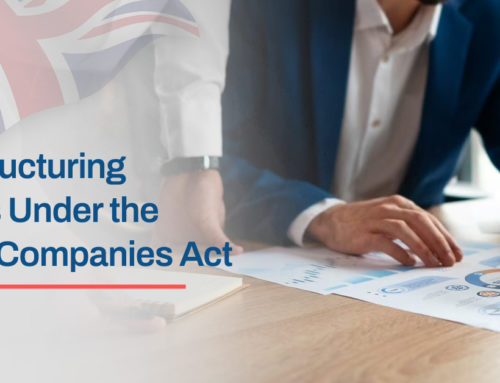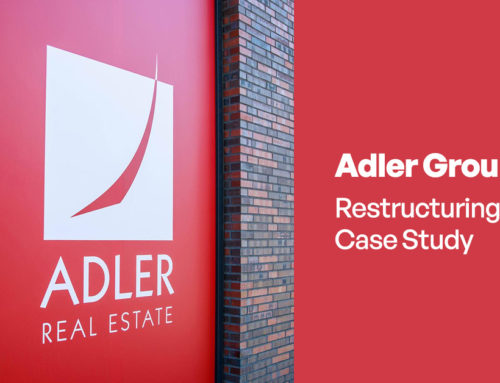The latest insolvency statistics showed that the number of company insolvencies had risen by 63% in October 2021, compared to October 2020 which had 1,405. But the figure that stood out from this data is the number of Creditors’ Voluntary Liquidations (CVLs) – 1,248 companies in October alone, which is higher than pre-pandemic levels.
Entering into a CVL for many insolvent, Covid-hit businesses struggling with debt is proving to be a popular option. It’s cost-effective, it stops creditors taking further action, assets are sold to pay off creditors, it is an efficient process and, if the directors’ conduct is not called into question, they can often start another business.
But is this route the right choice for your business? Are there other options that may result in not having to close the business for good? Let’s look at a Creditors’ Voluntary Liquidation vs business rescue because in some circumstances, a CVL could be avoided.
What is a Creditors’ Voluntary Liquidation and its impact?
A Creditors’ Voluntary Liquidation, or CVL, is a legal process to close an insolvent company that is unable to pay its debts. Directors and shareholders of the company voluntarily enter into a CVL rather than being forced into liquidation by creditors.
The process must be handled by a licensed insolvency practitioner (IP) who will manage the sale of the company’s assets, draw up and complete all the necessary paperwork, liaise with creditors and HMRC, place the required advert in The Gazette, ensure the creditors are paid in the correct sequence, i.e. priority creditors first, and investigate the directors’ conduct prior to and during the liquidation process.
But liquidating a business is closure of the business; there’s no going back once the liquidation process has commenced. There are also financial implications in respect of any personal guarantees made by directors, which they are responsible for, and should the IP find a director has acted fraudulently, carried out any wrongful trading or traded when the company was insolvent, there is the serious matter of a potential prison sentence.
Advantages and Disadvantages of a CVL
There are pros and cons to a Creditors’ Voluntary Liquidation vs Business Rescue. The advantages are:
● It is a voluntary decision by the company’s directors and shareholders; therefore they have not been forced into liquidation by a creditor.
● As the liquidation process is handled by the IP, the directors no longer have to deal with the creditors as the IP takes over.
● Any legal action by a creditor, including winding up petitions or appointment of a bailiff, is stopped.
● It is a cost-effective option to closing a company.
● Debts are paid off using the monies raised from the sale of assets and those that are not covered are written off, including any government bounce back loans of CBILS.
● While assets are sold to pay for the liquidation process, directors have the option to purchase any of the company’s assets, including the company name, equipment and premises, but this must be at market value.
● There are no redundancy or restructuring costs involved.
● It is an efficient process and can be completed within a few months.
The disadvantages are:
● The interest of the creditors is always the top priority; they have the option to vote against a CVL.
● The IP must investigate the directors of the company to ensure there was no unethical or illegal behaviour, and this is reported to the courts.
● There is no going back from a CVL; the company is closed completely and removed from the Companies House register.
● Any personal guarantees made by directors are their responsibility and must still be paid by them. This could involve a creditor taking the director to court personally.
What is business rescue and what is its impact?
In some cases, particularly if debts aren’t too high, it may be possible to enter a business rescue solution rather than close the company. Business rescue, also known as restructuring, is the consideration of different strategic procedures for a business that helps get the company back on track. There are a variety of business rescue options, such as:
● Time to Pay – if a creditor is threatening legal action, it may be possible to enter into an informal agreement with the creditor whereby the debt is paid back over a short period of time, such as 3 months or 6 months. HMRC offers a Time to Pay (TTP) solution which could help with tax, VAT or PAYE payments.
● Company Voluntary Arrangement (CVA) – this arrangement is a formal process and must involve an IP to manage the agreement. A CVA stops any creditor action and allows the company to pay off their debts over a longer period of time. In addition, any unsecured debt which is not paid back within the agreed period is written off.
● Pre-pack administration – if a creditor is taking the company to court, an option may be to sell the company through a pre-pack administration deal. The debt is paid and the business can continue.
● Administration – unlike a pre-pack administration process, it is the final option before liquidation and therefore has a much greater impact on the directors and staff, who may lose their jobs.
● Refinance – sometimes, if cash flow is the major problem and a lender has lost confidence in the company to pay back, another lender may not be so cautious and will allow the company to borrow the funds to pay back the threatening lender.
Advantages and disadvantages of business rescue
There are pros and cons to a business rescue package. The advantages are:
● The business is able to continue to trade.
● It can help businesses that are facing a temporary cash flow situation or have been impacted by the Covid-19 pandemic.
● The company could achieve a better return than through a liquidation process.
● There is a lower likelihood of employees losing their jobs.
● Directors’ conduct is not investigated.
● Potential to retain strong relationships with suppliers and stakeholders.
However, there are also disadvantages, including:
● It is a public matter; the company’s financial position will be advertised which may impact confidence levels of suppliers and stakeholders.
● It can be a costly process as the company will have to restructure their business and procedures to turn the business around.
● The company will need to employ the services of an IP, which can be costly.
● Some assets may have to be sold to raise capital.
● It may mean committing to staff redundancies.
Creditors’ Voluntary Liquidation vs business rescue – it’s not always a clear cut decision and all options should be considered.
If your business is struggling with debt and you’re finding it difficult to see a way out of the problem, the first step is to seek professional advice. Our highly experienced professionals at Leading UK are on hand to help with advice on business rescue and restructuring operations, voluntary liquidation of solvent and insolvent companies, and compulsory liquidation.






